The Navy’s Veteran Destroyers Are Literally Getting Bigger
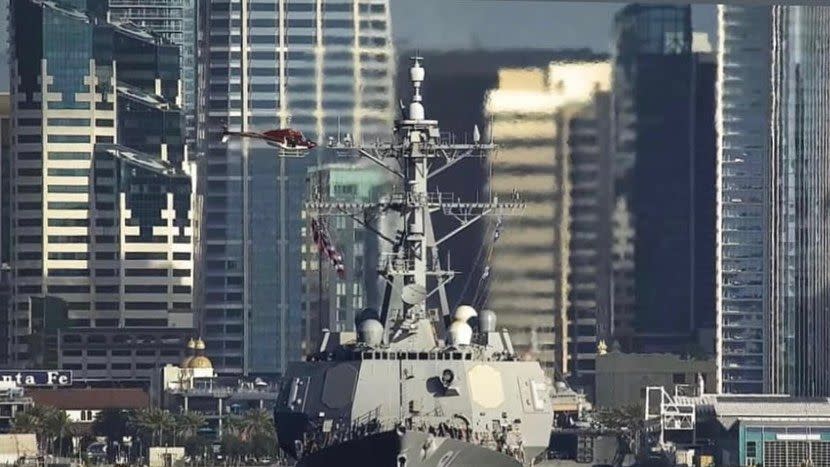
In January, it was revealed that the U.S. Navy’s Arleigh Burke-class guided missile destroyers Pinckney, James E. Williams, Chung Hoon, and Halsey will be the lead ships to field a major 4-part upgrade known as MOD 2.0.
A lot of upgrades to modern military vehicles take place largely ‘under the hood.’ Millions of dollars can go toward swapping in updated engines and radars, digitizing formerly analog displays, and installing modern software with few externally visible alterations—save the odd extra antenna or sensor pod here or there.
But that sure isn’t the case with MOD 2.0, which is aimed at bringing the Navy’s 9,700-ton Flight IIA-model Burkes to (almost) match the sensor and electronic warfare capabilities of the newest Flight III model. Earlier in November of 2023, ship watchers posted photos revealing the substantial revisions made to the USS Pinckney in particular.
BREAKING: USS Pinckney (DDG 91) Arleigh Burke-class Flight IIA guided missile destroyer leaving San Diego after two year DDG MOD 2.0 upgrade with SEWIP Block 3 - November 7, 2023 #usspinckney #ddg91
More info - https://t.co/pKndmCJz0K
SRC: webcam pic.twitter.com/wVFcyurfXY— WarshipCam (@WarshipCam) November 7, 2023
The superstructure atop Picnkney’s hull, housing the bridge and mounting various radars, was visibly bulked out with beefy new 22-foot-tall “shoulders.” These protrude horizontally over the sides of the Burkes’ hulls at the base, leading to the ‘muffin top’ appellation for its head-on profile.
The bulging sponsons house a package of new self-defense capabilities from a major upgrade to its SLQ-32 electronic warfare system known as SEWIP Block III.
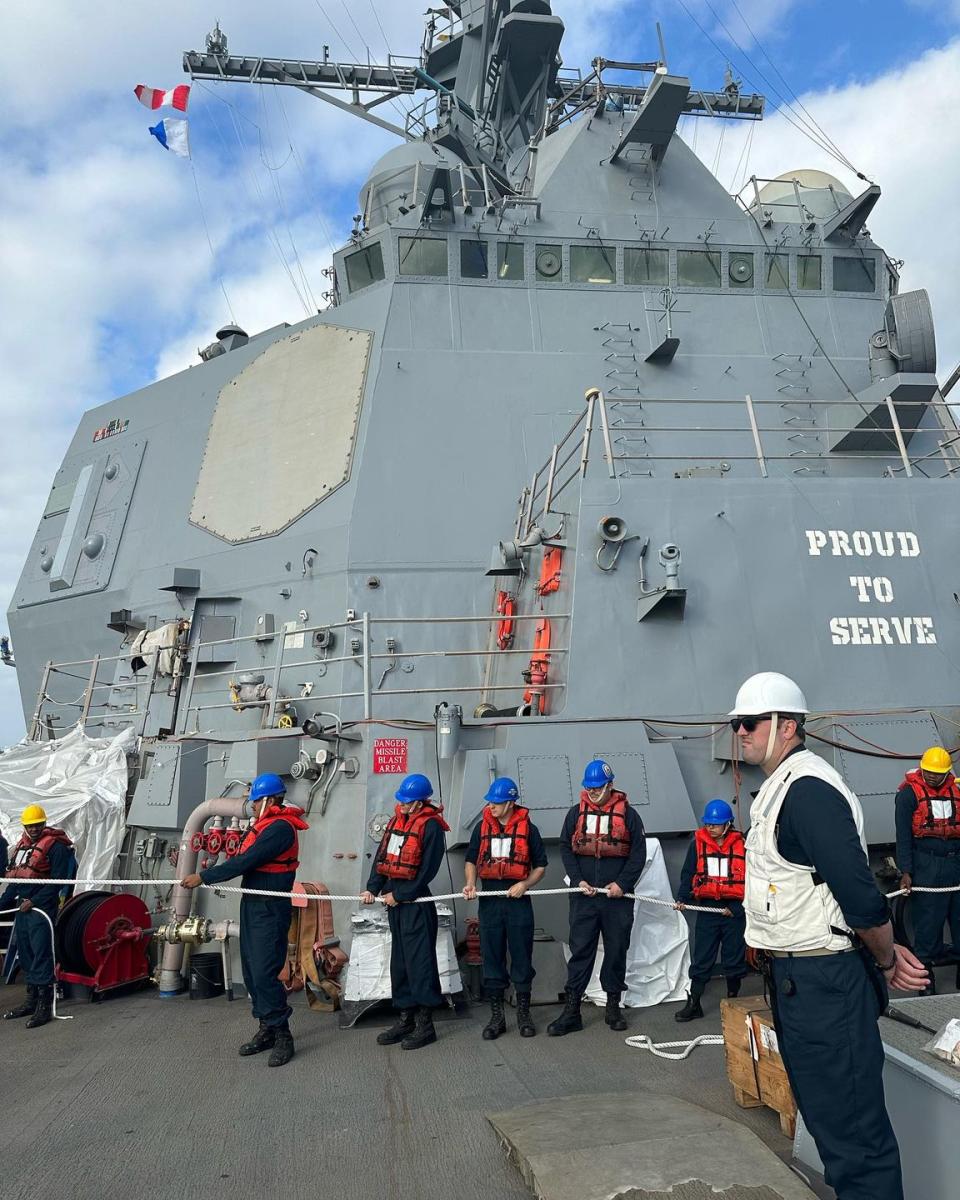
The upgrade also includes a ‘baseline 10’ update to the ship’s Aegis Combat System and heavy-duty cooling systems to handle the additional heat generated by SEWIP Block III and (eventually) new SPY-6(V)4 radars. However, installation of SPY-6 will only follow after an initial operational test with the new SEWIP Block, cooling, and AEGIS updates. Once bugs are identified and ironed out, the intention is to upgrade multiple ships annually.
Ultimately, MOD 2.0 aims to update 20 Flight IIA destroyers in total, each launched between 1998 and 2010. The project is expected to total $17 billion for 20 ships (roughly $850 million per destroyer), and each refit is expected to take 1.5 to 2 years to complete.
Congress has expressed some doubts that the program will succeed due to problems attempting to upgrade the now-retirement-bound Ticonderoga-class cruisers, so a full update isn’t guaranteed. However, the Ticonderogas are notable for being plagued with hull-cracking issues due to their blended steel-aluminum hulls—not a problem with the steel-hulled Arleigh Burkes.
Keeping the Burkes on the cutting edge
Entering service in 1991, the Arleigh Burke guided missile destroyer (or DDG-51) has proven to be by far the most successful and adaptable of the Navy’s post-Cold War surface combatants. 33 years after the lead ship was commissioned, 73 Burkes in four major submodels are in service, and 19 new Flight III Burkes are either under construction or on order. Roughly two new Burkes are built annually—at Bath Iron Works shipyard in Maine and Ingalls Shipbuilding in Mississippi—for $2.2 billion each.

The DDG-51s were designed around packing the soundest technologies of the larger, preceding Ticonderoga-class missile cruiser—powerful radar, Aegis Combat System, and adaptable Mark 41 vertical-launch missile-cell armament—into a smaller, steel-hulled destroyer. In subsequent decades, Burkes were built and/or retrofitted to include new helicopter hangars, ballistic missile defense capabilities, and additional missile-launch cells. Powerful new payloads included the SM-3 ballistic missile interceptor, the versatile SM-6 multi-role missile, and Nulka missile decoys. They also featured the RIM-67 ESSM Sea Sparrow, which can be quad-packed into missile cells for extra short-range air defense.
The Burke ended up being the Navy’s largest-ever and longest-serving destroyer, and it has subsumed the missions of larger cruiser and battleships. A Burke can protect both itself and nearby ships or coastal areas from ballistic and cruise missiles and warplanes, hunt submarines using sonar and torpedoes, attack surface targets over a thousand miles away with cruise missiles and nearby ones with its 5” deck gun, and deploy two MH-60R Seahawk helicopters that are capable of a wide variety of missions themselves.
For a recent example, between October of 2023 and early January of 2024, five Burkes shot down dozens of kamikaze drones, similar numbers of cruise missiles, and seven anti-ship ballistic missiles launched towards the Red Sea by Houthi rebels in Yemen—the first ever interception of ASBMs in combat. Some of those Burkes also deployed helicopters (which destroyed attacking Houthi motorboats) and launched cruise missiles targeting Houthi anti-ship weapons on land. And this is actually the second time that Burkes successfully repelled Houthi missile attacks in Red Sea and retaliated. Similar incidents occurred in 2016.
SPY-6(V)4 on the Burke
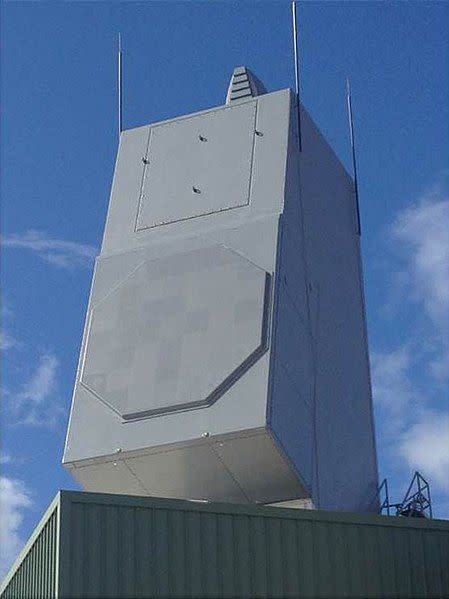
The centerpiece of MOD 2.0 is the introduction of the AN/SPY-6(V)4 Active Electronically Scanned Array (AESA) radar, which will replace the Burkes’ original—and very powerful—SPY-1D Passive Electronically Scanned Array (PESA) S-Band radars.
X-Band AESA radars are already proliferating on U.S. jet fighters due to their greater resolution/precision and range. They also tend to be much more resilient to jamming (due to their frequency-hopping capabilities), and can perform multiple tasks simultaneously, such as simultaneous jamming and scanning.
The SPY-6 AESA (built by Raytheon) consumes twice the electricity as the SPY-1D, but is 30 times more sensitive. This allows it to detect objects up to twice as far, or with half the minimum radar cross-section, and carry out engagement involving up to 30 targets simultaneously. It is also much easier to maintain, with components that are replaceable in just 6 minutes.
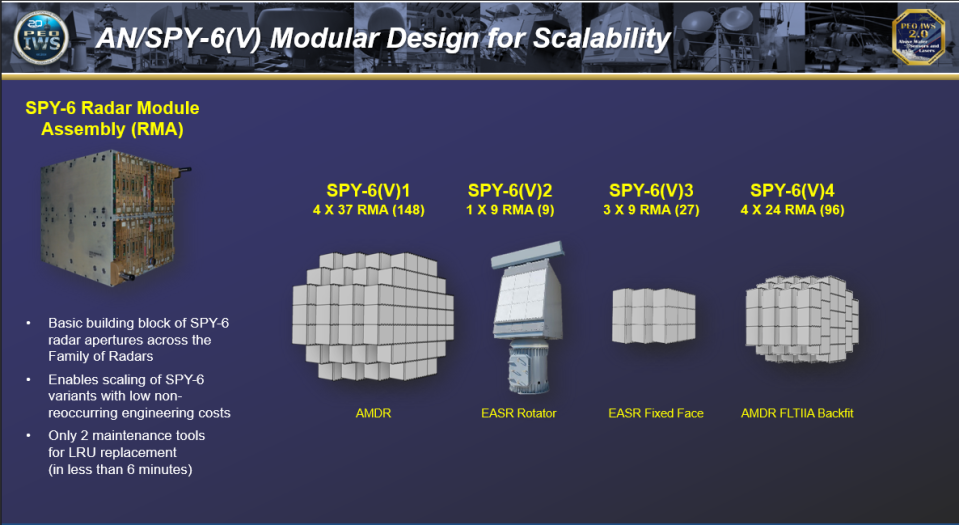
The fixed SPY-6(V)1 radar is fitted to new-built Flight III Burkes, while rotating SPY-6(V)2 and (V)3 are fitted to newer aircraft carriers. But (V)1 is apparently incompatible with the Flight IIA destroyers, so they’ll instead receive a (V)4 variant downgraded from 37 to 24 radar modular arrays (also known as RMAs or ‘cubes’), but with otherwise the same functional abilities.
A total of four (V)4s covering 90 degree arcs will be mounted to provide 360-degree coverage, resulting in a total of 96 radar modules on MOD 2.0 Burkes.
Making the ‘Slick’ jammer even slicker
The AN/SLQ-32 (or ‘Slick 32’) electronic warfare suite has been a mainstay on U.S. warships for over four decades. It was formulated to help defeat lethal sea-skimming anti-ship missiles as it became evident that air defenses might find these difficult to detect and shoot down.
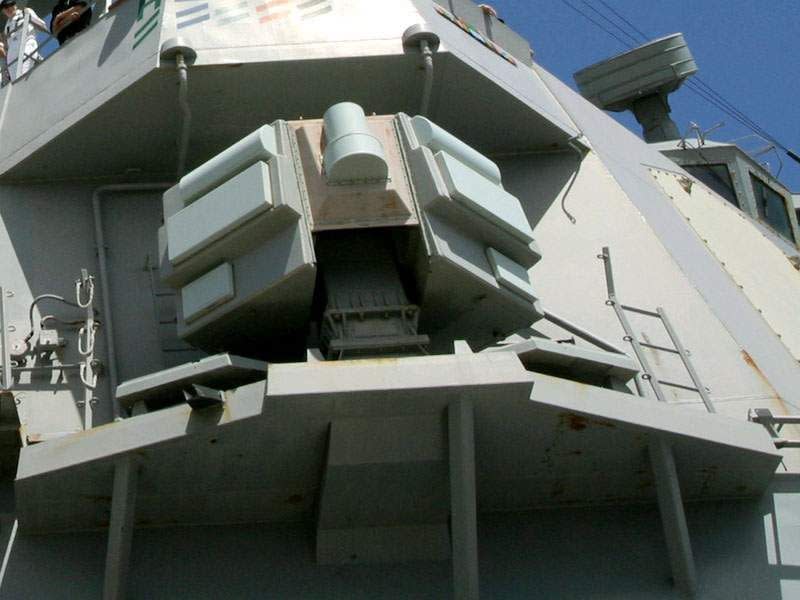
The original AN/SLQ-32(V)3 on DDG-51s provided warning for targeting radars and seekers on incoming missiles,and could trigger Mark 36 decoy launchers. But unlike the (V)1 and (V)2 variants on smaller ships, it also sported an additional antennas to jam targeting radars and terminal guidance seekers on incoming anti-ship missiles.
The first major upgrade to the (V)3 model was thus known as the (V)6, or as SEWIP Block 1 and 2. This granted higher sensitivity to stealthier adversary radars, electromagnetic sensing ability that allowed for the identification of threat radars (Specific Emitter Identification, or SEI), and geolocation of their origin point (AKA Electronic Support Measures, or ESM).
The new (V)7 model (or SEWIP Block 3) for the MOD 2.0 focuses instead on enhancing the Slick-32’s jamming capability by using an AESA antenna like that of the SPY-6. This enables very precise and focused computer-steered ‘pencil’ beam tracking of individual incoming threats—or, rather, multiple such beams that can each track their own threat simultaneously.
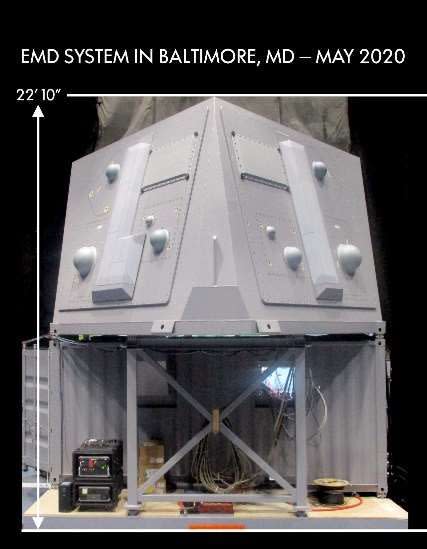
The ability to defeat missile threats—and furthermore, do so without expending the destroyer’s valuable missile inventory—is central to the combat effectiveness of surface warships facing any opponent with anti-ship ability.
After all, a destroyer that runs out of multi-million dollar air defense missiles—or worse gets hit by a decent-sized anti-ship missile—is likely one that’s out of the fight. And smart enemies will seek to surge as many missiles and kamikaze drones as possible simultaneously to overwhelm naval air defenses.
But a jammer doesn’t run out of ammo—and with the AESA upgrade, it could potentially disable multiple incoming missiles or drones at the same time, reducing the burden on kinetic defenses.
Block III will also feature software-defined open-architecture that allows for rapid, less costly upgrades to counter new threats. In addition, its antennas can be used as a back-up radar, an exotic communication system, or for spying on adversary communications. Its open architecture will also eventually enable the Navy to install cognitive AI to assist in classifying adversary emitters and (hopefully, eventually) devise on-the-fly electronic countermeasures to newly identified threats.
There’s also a mysterious “SEWIP Block 3T” with the new designation AN/SLQ-59 Transportable Electronic Warfare Module, which is intended specifically for ships in the U.S. 7th Fleet operating in the Pacific. It’s presumably a stop gap meant for defeating capabilities associated with China or North Korea, such as the former’s notorious anti-ship ballistic missiles.
Another tailored stop gap, AN/SLQ-62, has been developed for ships in the 6th Fleet that are active in the waters surrounding Europe and Africa—possibly tuned to defeat Russian weapons like the P-800-Oniks type hypersonic anti-ship missiles.
The U.S. Navy’s future destroyers
Arleigh Burkes all use versions of the Aegis Combat System, which allows for the very fast coordinated engagement of detected threats, pooling of sensor data between Aegis-controlled ships, and even Cooperative Engagement Capability (CEC) that allows one ship to shoot and another to provide guidance.
MOD 2.0 will install the Baseline 10 software, which supports the new capabilities of the SPY-6 radar and features new open-software architecture that allows deployment of new capabilities/patch upgrades in just three to four weeks. Without this tech, upgrades could take months or even years.
The Navy has massively upgraded the Burkes’ capabilities over the last four decades—to the point that modern Burkes have nearly as much firepower and sensors as the Ticonderoga cruisers that the Navy plans to soon retire. However, as the Flight IIA’s bulging profile hints, the original Burke architecture is running out of space, spare electricity, and the cooling capacity to absorb additional hardware.
The Navy is therefore working on finally procuring a new, even larger, 13,500-ton destroyer designated DDG(X) to succeed the Burke class. The new craft would have more fuel-efficient propulsion, additional space, and spare electrical power. This would allow for the eventually replacement of SPY-6 radar with a larger 6-meter-diameter radar, and the mounting of laser close-defense systems and oversized missile launch cells for hypersonic weapons.
While the DDG(X) should enter production in 2032, the MOD 2.0 upgrade—if fully implemented—could help Flight IIA Burkes hold their own for decades alongside newer Block IIIs, even in high-threat environments.
However, if DDG(X) development falls behind schedule, there could end up being a Flight IV Burke after all, and/or broader service-life extensions and upgrades for older Burkes along the lines of MOD 2.0.
You Might Also Like

